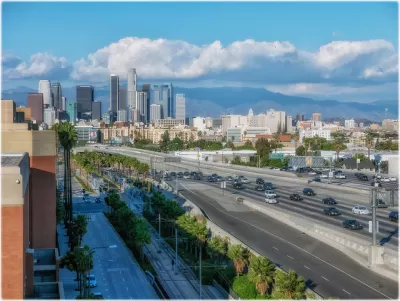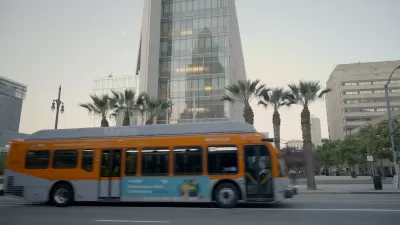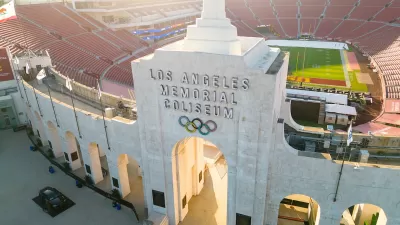L.A. Metro’s plan to add hundreds of miles of new traffic lanes is projected to increase carbon emissions by 10 million metric tons.

In an op-ed for the Los Angeles Times, founder of Streets for All Michael Schneider argues that despite a plan to build more than 100 miles of rail and new bus and bike lanes, the Los Angeles County Metropolitan Transportation Authority (Metro), with its current transportation plan, will encourage people to drive more miles.
According to Schneider, “just as Metro is spending tens of billions building rail and bus projects, it also plans to spend billions adding 363 miles of new highways and arterials. According to Metro’s own calculations based on state standards, this will increase vehicle miles traveled by up to 36.8 billion, and emit an additional 10.1 million metric tons of CO2”—more than three times the number of miles driven that Metro could eliminate through its. transit efforts. As Schneider puts it, “The expansion of highways will do far more harm than the expansion of mass transit will avert.”
Huge investments of the past have shown the folly of expanding highways to address traffic congestion. In the recent past, we spent $1 billion to add a lane in each direction onto the 405 in West Los Angeles. In less than 12 months, traffic had grown worse than it was before the project
Schneider writes, “If Metro is serious about building a more sustainable future, it must stop investing in expanding highways.” and instead invest in projects that make it easier for Angelenos to use transit, walk, and bike safely.
FULL STORY: Op-Ed: L.A. is spending tens of billions of dollars to make climate change and traffic worse

Alabama: Trump Terminates Settlements for Black Communities Harmed By Raw Sewage
Trump deemed the landmark civil rights agreement “illegal DEI and environmental justice policy.”

Planetizen Federal Action Tracker
A weekly monitor of how Trump’s orders and actions are impacting planners and planning in America.

The 120 Year Old Tiny Home Villages That Sheltered San Francisco’s Earthquake Refugees
More than a century ago, San Francisco mobilized to house thousands of residents displaced by the 1906 earthquake. Could their strategy offer a model for the present?

In Both Crashes and Crime, Public Transportation is Far Safer than Driving
Contrary to popular assumptions, public transportation has far lower crash and crime rates than automobile travel. For safer communities, improve and encourage transit travel.

Report: Zoning Reforms Should Complement Nashville’s Ambitious Transit Plan
Without reform, restrictive zoning codes will limit the impact of the city’s planned transit expansion and could exclude some of the residents who depend on transit the most.

Judge Orders Release of Frozen IRA, IIJA Funding
The decision is a victory for environmental groups who charged that freezing funds for critical infrastructure and disaster response programs caused “real and irreparable harm” to communities.
Urban Design for Planners 1: Software Tools
This six-course series explores essential urban design concepts using open source software and equips planners with the tools they need to participate fully in the urban design process.
Planning for Universal Design
Learn the tools for implementing Universal Design in planning regulations.
Clanton & Associates, Inc.
Jessamine County Fiscal Court
Institute for Housing and Urban Development Studies (IHS)
City of Grandview
Harvard GSD Executive Education
Toledo-Lucas County Plan Commissions
Salt Lake City
NYU Wagner Graduate School of Public Service





























